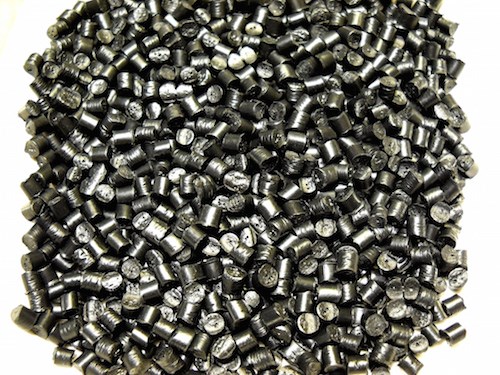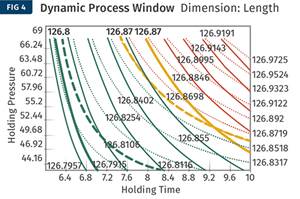The 5 M’s of Molding—Part 3: Material
You’ve accounted for variability in two other “Ms”—mold and man—but materials in their lot-to-lot differences and handling challenges pose a distinct threat to repeatability.
You’ve accounted for variability in two other “Ms”—mold and man—but materials in their lot-to-lot differences and handling challenges pose a distinct threat to repeatability.
Material: One of the fundamental considerations in processing is the material being used. Processing relies heavily upon the consistency and quality of the plastic that has been chosen for the part’s aesthetic and dimensional make up. Here are some of the primary variables that need to be reviewed during the stages of process development and in some cases continuous improvement.
Properties: Every material has its own unique set of molding properties that must be considered as a molding operation is developed. Here is a list of some of these properties as they relate to part aesthetics and dimensions:
Temperature- Mold and barrel temperatures are a huge part of the molding equation. Some examples of potential heat-related deficiencies would be long cycles, warping, burn at end of fill, gassing, etc.
Shrinkage- Every material has its own rate of shrinkage and this is one key measurable that should be considered as material choice is being decided.
Melt Flow: Material viscosity is a key component during process development and improvement review. For instance, a heavily ribbed part might be better suited with a material with a low viscosity to assure that the flowfront moves quickly across the ribs preventing an overpack condition.
Aesthetics & Dimension: There are many variations on engineered materials that either benefit or detract from the overall performance and functionality of part production. Utilize the knowledge and resources of your material manufacturer whenever possible to find the appropriate material solutions.
Additives: There are many situations where material additives can create problems or provide solutions. For instance, the use of color mixing may seem cost effective, yet generate scrap due to poor diffusion leading to faulty parts via color swirls. Or from a different perspective, adding a lubricant to polypropylene might eliminate parts sticking in a mold where draft cannot be added. Work with your material supplier to develop and/or improve a part’s molding capabilities.
Drying: Drying is always a major factor in process consistency. Verify that your dryer throughput is sufficient enough to allow adequate time to properly dry the material being used. It is also important to verify that the material is truly dry through moisture analysis.
Characteristics: When choosing a material, it is important to understand what the typical characteristics are regarding a material’s performance and drawbacks. For instance, nylon has a tendency to shrink; polypropylene tends to have sink issues over large or deep ribs. Look for materials that match the functionality of the part being molded while avoiding potential problems associated with material choice.
Garrett MacKenzie is the owner and editor of . Mackenzie started in plastics at the age of 19 as an operator, eventually moving up through the ranks to engineering and management over a 29-year timeframe. He currently works as a plastic injection consultant in engineering and training capacities. He can be contacted at garrett.mackenzie@mail.com.
Next week, Part 4 in The Five “Ms” of Molding: The Machine

Related Content
Process Monitoring or Production Monitoring — Why Not Both?
Molders looking to both monitor an injection molding process effectively and manage production can definitely do both with tools available today, but the question is how best to tackle these twin challenges.
Read MoreOptimizing Pack & Hold Times for Hot-Runner & Valve-Gated Molds
Using scientific procedures will help you put an end to all that time-consuming trial and error. Part 1 of 2.
Read MoreThree Key Decisions for an Optimal Ejection System
When determining the best ejection option for a tool, molders must consider the ejector’s surface area, location and style.
Read MoreWhat to Look for in High-Speed Automation for Pipette Production
Automation is a must-have for molders of pipettes. Make sure your supplier provides assurances of throughput and output, manpower utilization, floor space consumption and payback period.
Read MoreRead Next
See Recyclers Close the Loop on Trade Show Production Scrap at NPE2024
A collaboration between show organizer PLASTICS, recycler CPR and size reduction experts WEIMA and Conair recovered and recycled all production scrap at NPE2024.
Read MoreFor PLASTICS' CEO Seaholm, NPE to Shine Light on Sustainability Successes
With advocacy, communication and sustainability as three main pillars, Seaholm leads a trade association to NPE that ‘is more active today than we have ever been.’
Read MoreMaking the Circular Economy a Reality
Driven by brand owner demands and new worldwide legislation, the entire supply chain is working toward the shift to circularity, with some evidence the circular economy has already begun.
Read More














